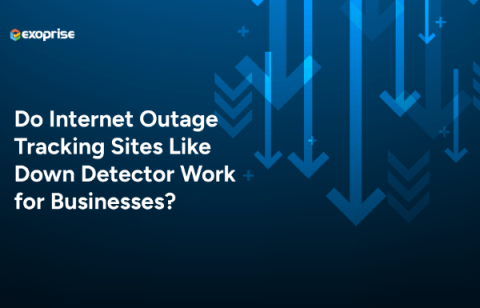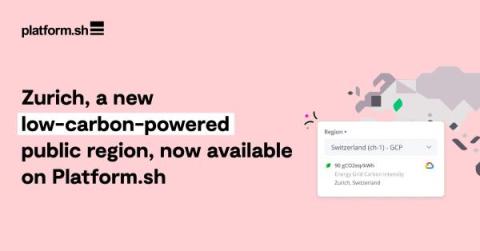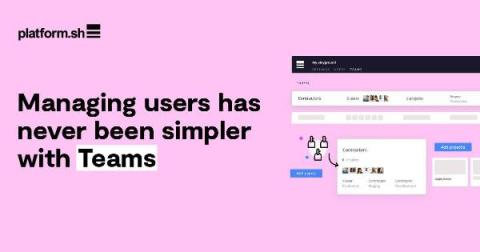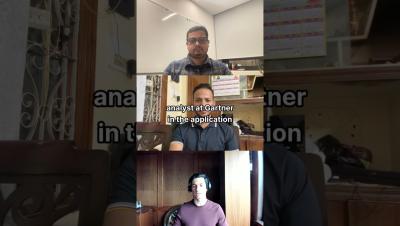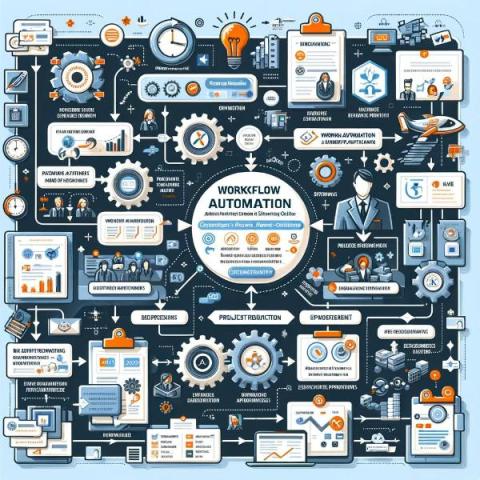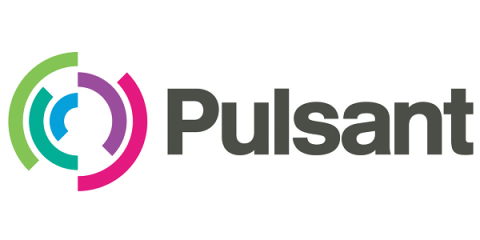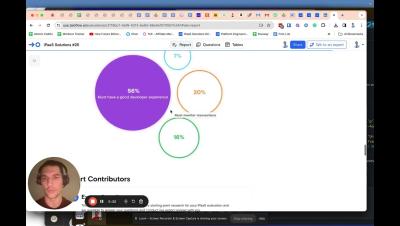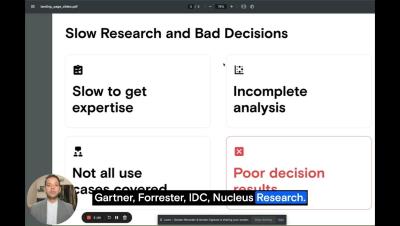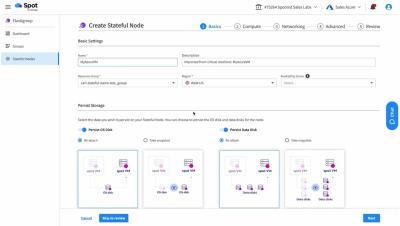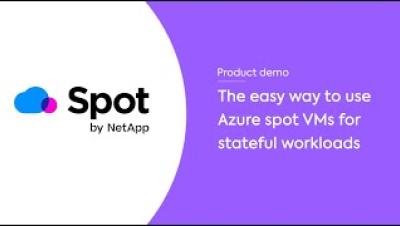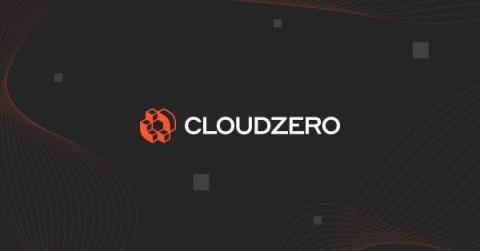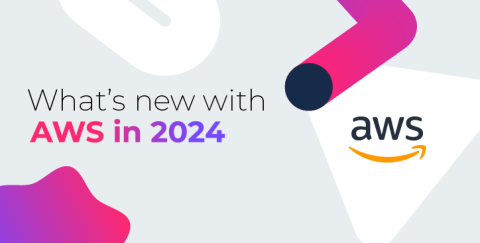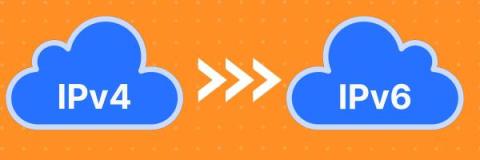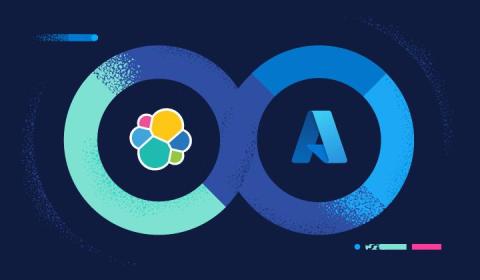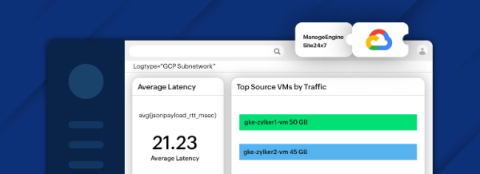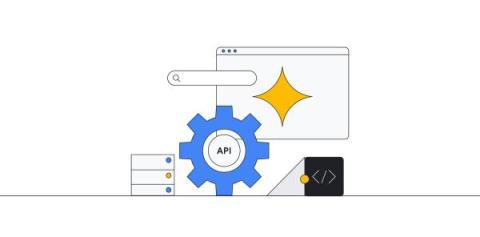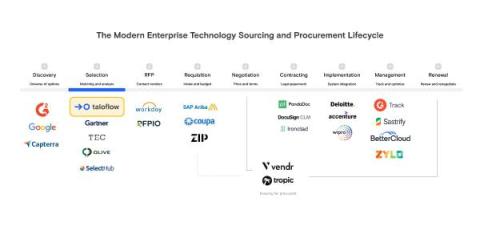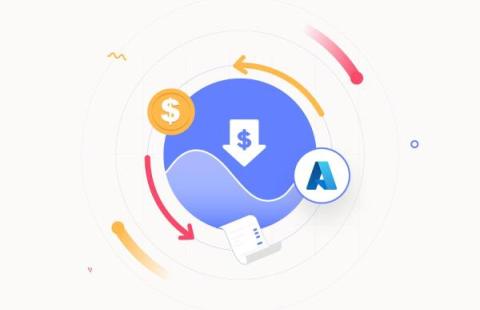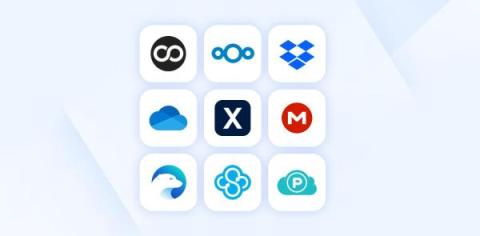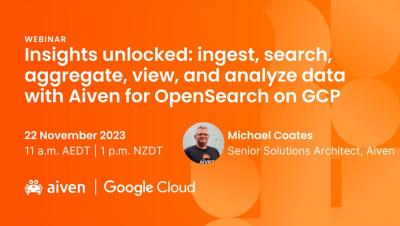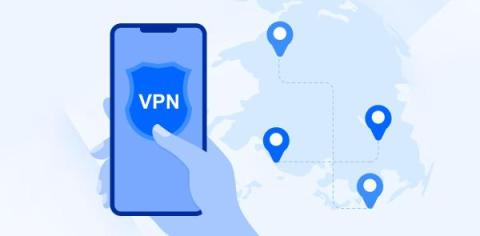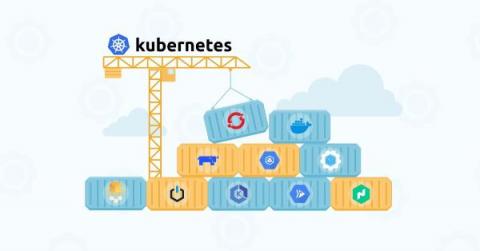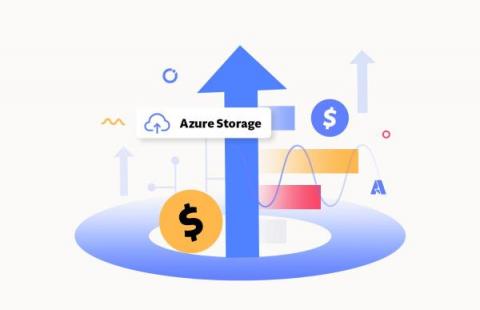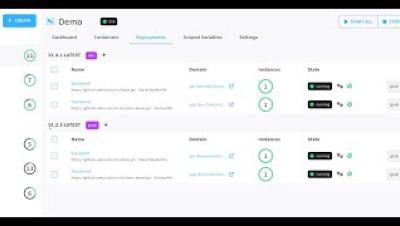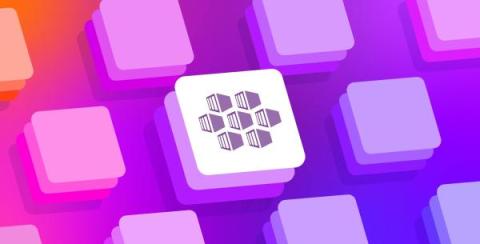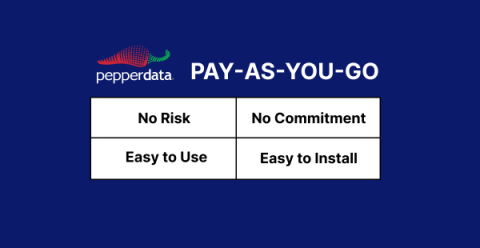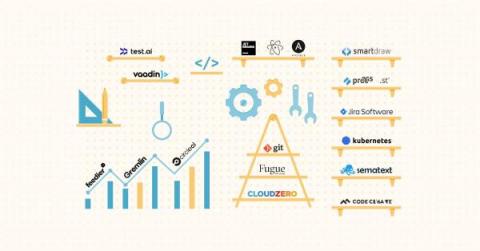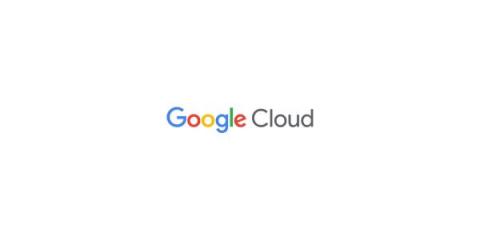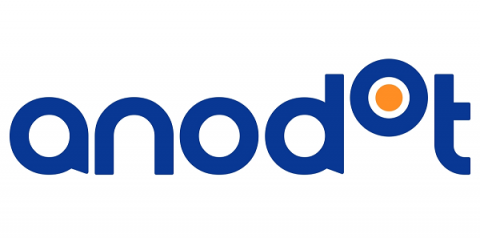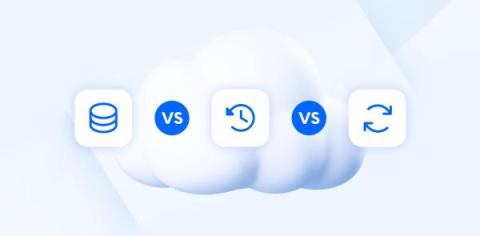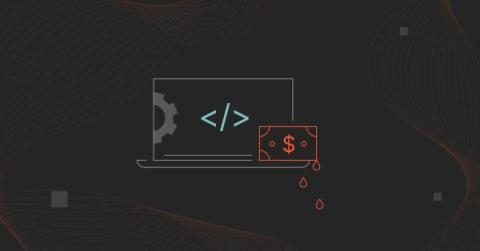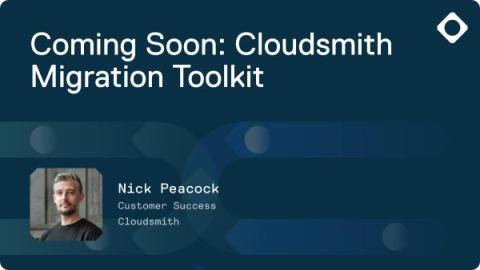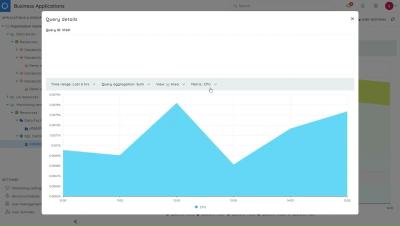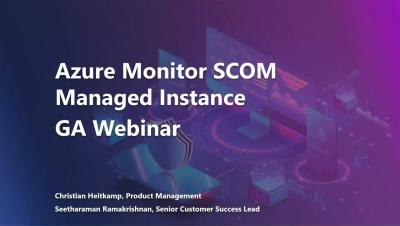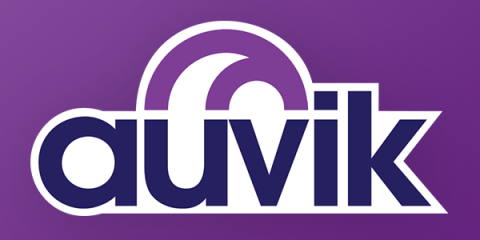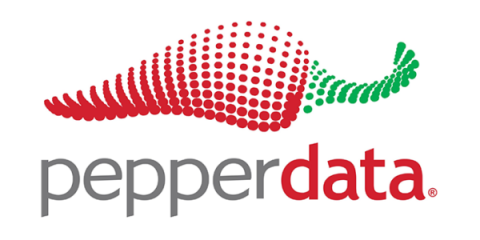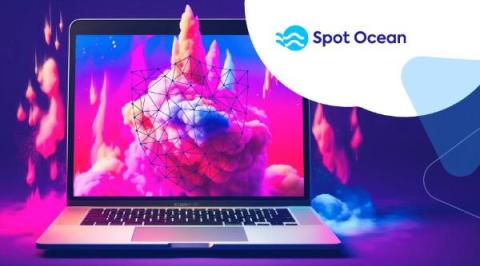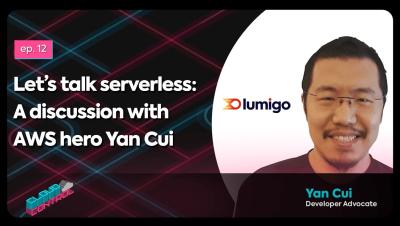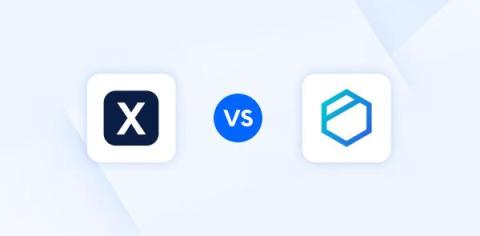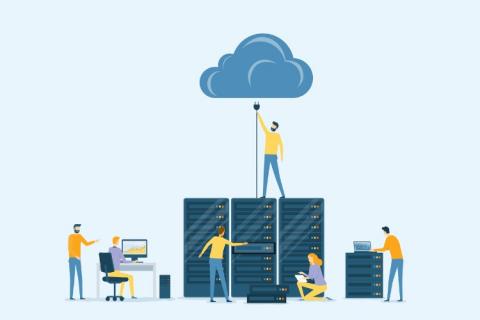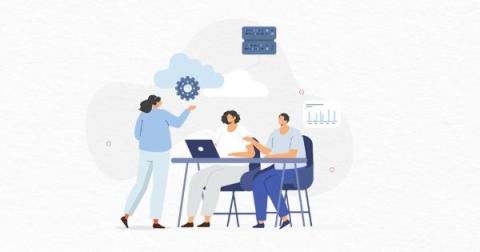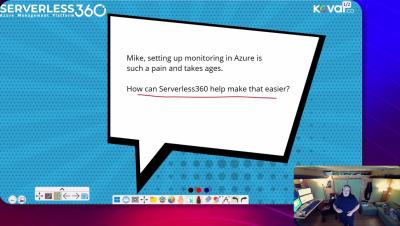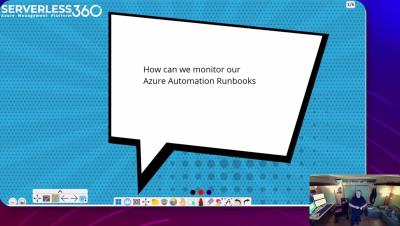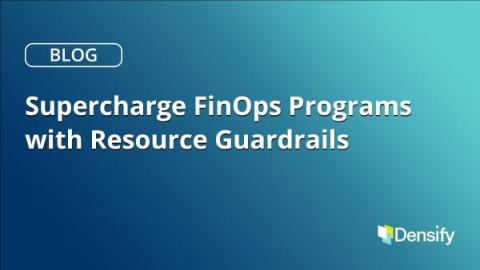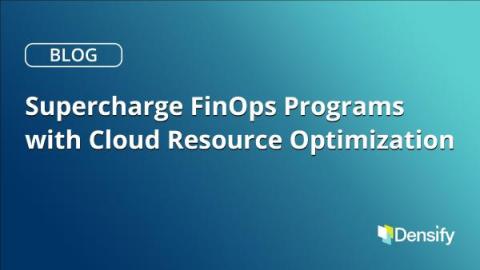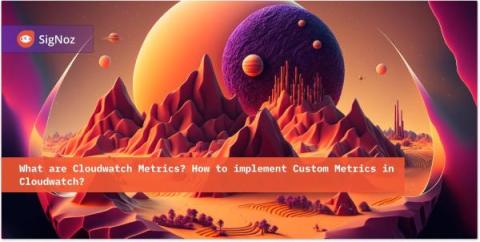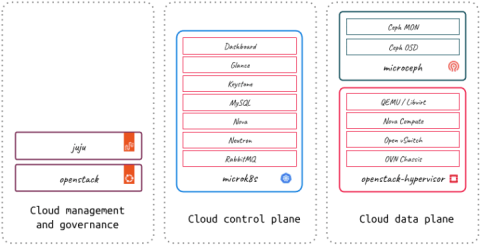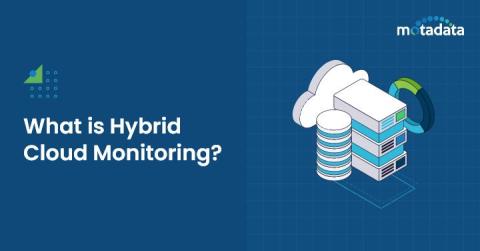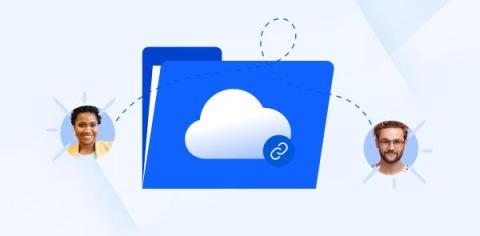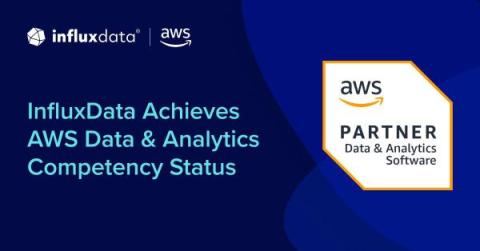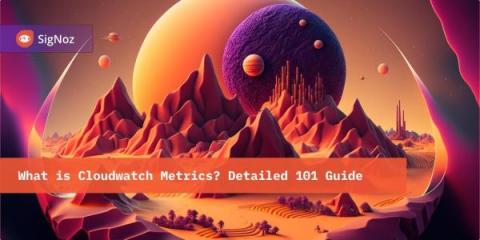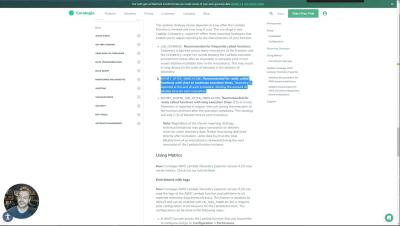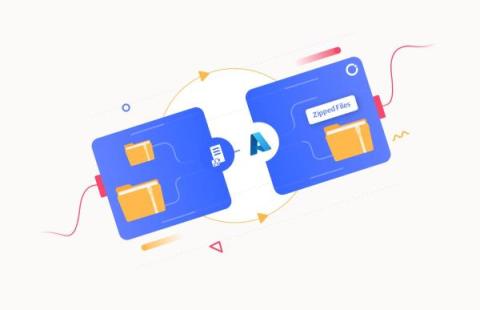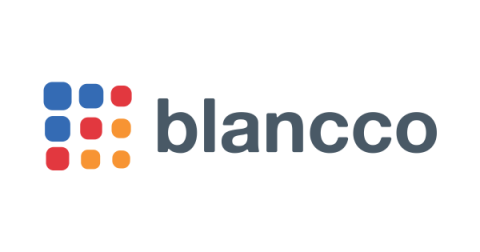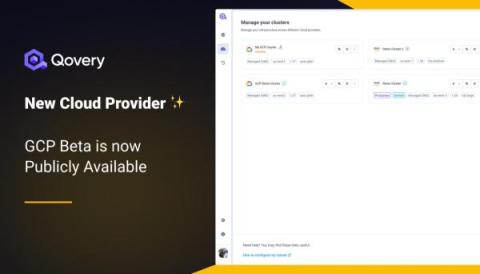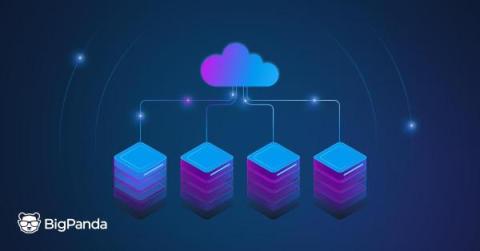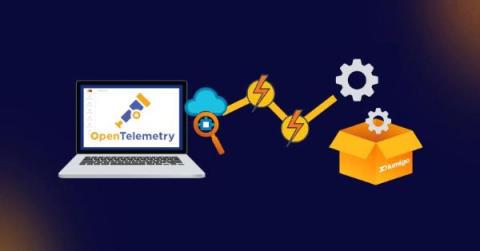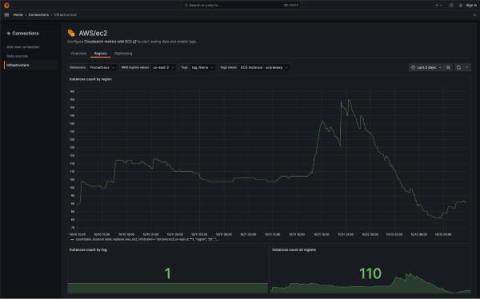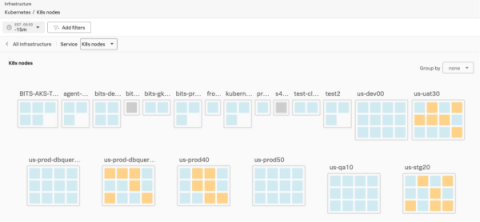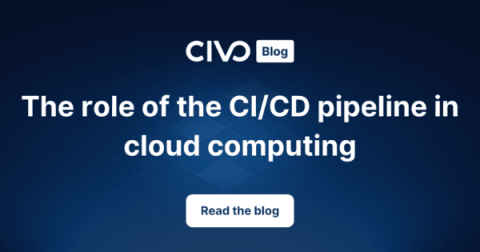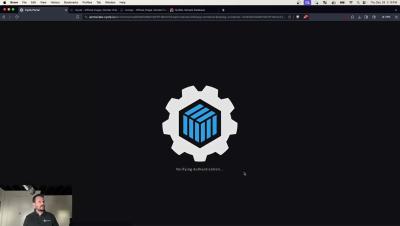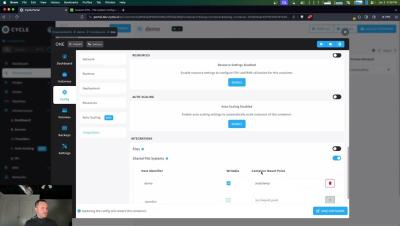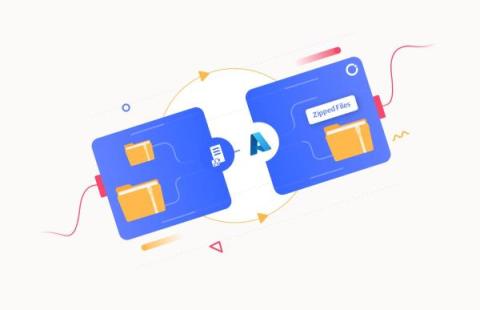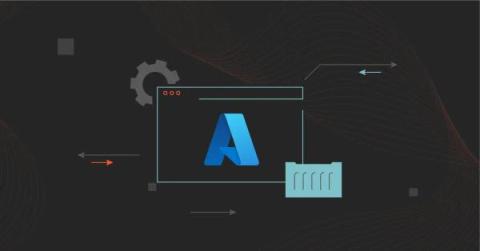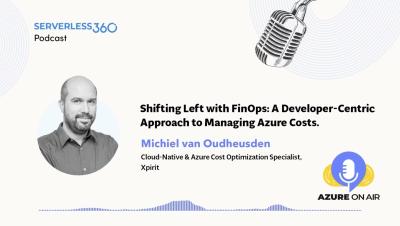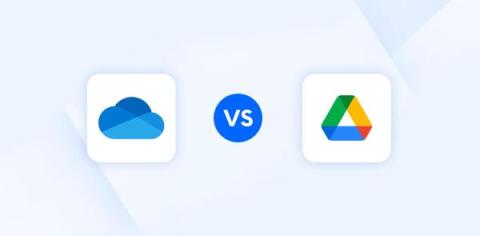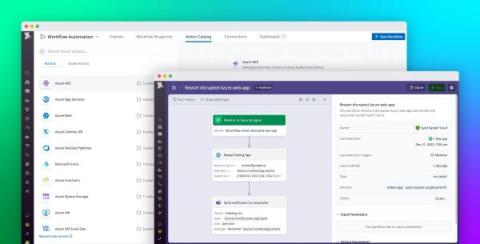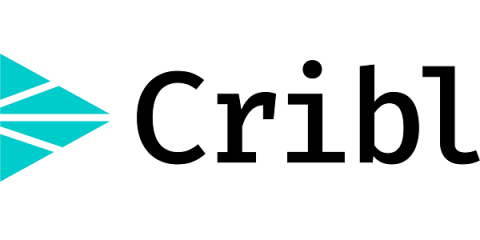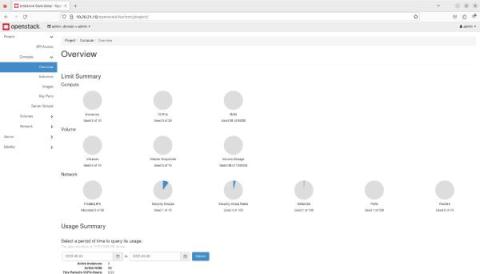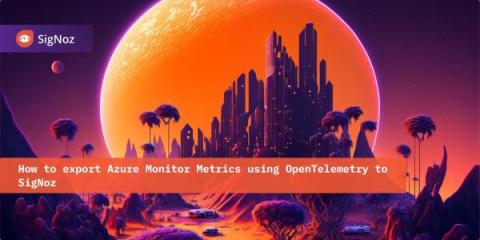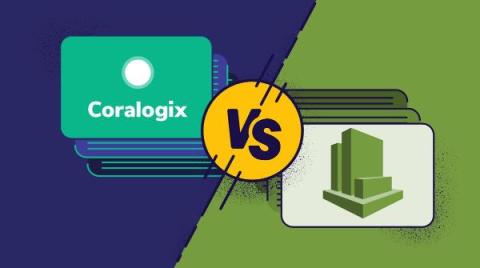Operations | Monitoring | ITSM | DevOps | Cloud
January 2024
How to get SharePoint Online Library Size
Supercharge Your Azure Savings Strategy with Azure Dev/Test Subscription
Cloud Cost Incidents: Catching Cost Calamities on Time
Zurich, a new low-carbon-powered public region, now available on Platform.sh
Mastering the Cloud Migration: The Ultimate Guide to Cloud Migration Tools
Simple. Streamlined. Secure. Effortless user management has arrived with Teams
Making Informed Software Selection Decisions: MCDA and DMA Compared
Mastering Workflow Automation in SharePoint Online
Managing the Talent Gap
Monitor processes running on AWS Fargate with Datadog
How to import an existing stateful Azure VM
How to spin up stateful Azure workloads
Are Multi-Cloud Environments Getting Denser in 2024?
21+ DevOps Monitoring Tools Vital To Success
How To Maximize Free Cloud Resources Without Overstepping
What's new with AWS for 2024
Embracing IPv6: Anodot's Guide to a Smooth Transition
Elastic Observability monitors metrics for Microsoft Azure in just minutes
Forward logs from Google Cloud Platform to Site24x7 with Dataflow
How to Optimize Your AWS Costs in 2024: Top Vendors, Tips, and More
5 ways platform engineers can help developers create winning APIs
The Top 25 Vendor Selection Software and Tools in 2024
How to make the most of Azure Integration Account cost savings?
The Best Free Cloud Storage for Backups in 2024
Ingest, search, aggregate, view, and analyse data with Aiven for OpenSearch on GCP
7 Best VPN Services for 2024
10 Top Kubernetes Alternatives (And Should You Switch?)
The Cloudification of Telcos and the Evolution of the Telecom Ecosystem
The need for speed: achieving high data rates from data centre to cloud
Azure Storage cost optimization to achieve maximum cost savings
Azure Unit Economics for Crafting a Financially Sound Strategy
NEW FEATURE: Rainbow Deployments with Zero Downtime! (Jan 24 2024)
Streamline Azure container monitoring with the Datadog AKS cluster extension
Pay-As-You-Go with Pepperdata Real-Time Cost Optimization
The 25 Most Crucial Software Engineering Tools In 2024
Monitoring for every runtime: Managed Service for Prometheus now works with Cloud Run
AWS MAP & Anodot: Optimize Your Cloud Migration
A Guide to Cloud Storage vs Cloud Backup vs Cloud Sync
Cloud Scaling: Secrets to Stability + Security When Scaling Cloud Computing
What To Do When A Customer (Or Segment) Is Costing Your SaaS Business Too Much
Streamlining Cloud Costs With Smart Management Strategies
Scale Your Splunk Cloud Operations With The Splunk Content Manager App
Overcoming Messy Cloud Migrations, Outdated Infrastructures, Syslog, and Other Chaos
The Frugal Architect, Law I: Make Cost A Non-Functional Requirement
Azure VM Autoscaling to enhance performance and cost efficiency
Managing Hybrid Environments Using SCCM, Intune, and SCOM
Coming Soon: Cloudsmith Migration Toolkit
5 Cloud Outages Tracker Tools To Monitor Vendors in 2024
What's New in Serverless360: Databricks monitoring, Azure Cost group notifications, etc..
Microsoft Azure Monitor SCOM MI GA | What's New
Cloud vs On Premise: Comparison Chart for Network Management
Elevating App Security with Amazon VPC Strategies
A Quick Guide to Get You Started with Spark on Kubernetes (K8s)
Effortlessly keep EKS AMI up to date with Spot Ocean
When CloudWatch Won't Do: 15 Best CloudWatch Alternatives In 2024
Ep. 12: Let's talk serverless: A discussion with AWS hero Yan Cui
Software Selection: Your Company's Future Depends on Getting it Right
Which Alternatives to Tresorit Are Best for Personal Use or for Teams?
Unleashing the power of AI and automation for effective Cloud Cost Optimization in 2024
10 Key strategies for Enhanced Cloud Cost Visibility and Control
Top 5 Cloud FinOps strategies for 2024
What MSPs Need to Know About Our Partner Program
MSPs using CloudHealth are in for an abrupt start to 2024. VMware, which acquired CloudHealth, is ending its partner programs. Instead, they’re rolling out the exclusive Partner Program, starting from February 5, 2024. The switch will impact solution providers, resellers, and cloud services partners. With this new selective partner program, MSPs face fresh challenges in meeting the latest standards.
EKS Add-ons And Integrations: Evaluating Cost Impacts
Azure Resource Monitoring: Setting Up Key Metrics Made Simple!
How to monitor Azure Automation Runbooks?
Enhancing Corporate IT Security with Advanced Endpoint Solutions
Does Step Function's new TestState API make end-to-end tests obsolete?
Step Function added support for testing individual states . Which lets you execute individual states with the following: And returns the following: With the TestState API, you can thoroughly test every state and achieve close to 100% coverage of a state machine. So, does this eliminate the need for Step Functions Local ? Can we do away with end-to-end tests as well? If not, where should this new API fit into your workflow, and how should you use it?
5 Ways CloudZero Found Savings Using Its Own Platform
Supercharge FinOps Programs with Resource Guardrails
Time and time again we hear the same statements from FinOps teams with respect to what is holding back optimization of wasteful cloud resource consumption. Engineers and App Owners are interested in helping but stop short at actually taking actions to reduce that waste. There are many reasons for this main sticking point when it comes to application owners and developers taking action.
Azure App Service Pricing (2024)
Supercharge FinOps Programs with Cloud Resource Optimization
Troubleshooting distributed applications: Using traces and logs together for root-cause analysis
When troubleshooting distributed applications, you can use Cloud Trace and Cloud Logging together to perform root cause analysis.
What are Cloudwatch Metrics? How to implement Custom Metrics in Cloudwatch?
Laying the foundation for a career in platform engineering
A career in platform engineering means becoming part of a product team focused on delivering software, tools, and services.
Cloud-native infrastructure - When the future meets the present
Hybrid Cloud Monitoring: The Ultimate Guide to Benefits
In the fast-moving tech world, your business faces two main challenges: maintaining control of in-house servers and harnessing the flexibility of cloud computing. It is where “Hybrid cloud monitoring” emerges as a torch bearer, guiding your organization through the complexities of a dual environment. A hybrid cloud monitoring solution functions like the control centre for your business’s digital operations.
Enhanced Collaboration: Internxt's Brand New File-Sharing Features
Cyber Security - The Beacon of Trust
As John Lennon once said, another year over…and a new one just begun. As we head into 2024, it’s important to reflect on what we’ve seen and where we need to focus in the year ahead.
InfluxData Achieves AWS Data and Competency Status
Azure Automation is more than just PowerShell
Azure Automation is a powerful IT Automation service in use by thousands of organisations. Many organisations are using Azure Automation just as a PowerShell runbook execution service and are unaware of its wider capabilities.
The SaaS Revenue Model: 5 Types To Consider
What is Cloudwatch Metrics? Detailed 101 Guide
What is a sovereign cloud?
Receive zipped messages (or files) in BizTalk Server Solutions
Blancco Appoints Gagandeep Singh as Vice President of Global Marketing
What Is A Cloud Engineer? Here's a Quick Breakdown
Managed GCP GKE Autopilot Released in Public Beta
How to optimize your cloud infrastructure management
As on-premises infrastructure and workloads increasingly migrate to the cloud, you’ve undoubtedly encountered many challenges in managing complex cloud architectures. These hurdles include juggling cost-efficiency and security to maintain a seamless, high-performance infrastructure. Navigating your cloud infrastructure landscape requires thoroughly understanding its virtualized elements—servers, software, network devices, and storage.
Choosing the Right Observability Tools for Developers
This is the third and final blog post in a series about shifting Observability left. If you have not yet read the first two, you can find the first post here and the second post here. Observability is fundamental to modern software development, enabling developers to gain deep insights into their application’s behavior and performance.
Video analytics at the edge: How video processing benefits from edge computing
Computer vision: digital understanding of the physical world From face recognition to fire prevention, autonomous cars to medical diagnosis, the promise of video analytics has enticed technology innovators for years. Video analytics, the processing and analysing of visual data through machine learning and artificial intelligence, is perceived as a significant opportunity for edge computing.
Monitor Amazon EC2: key metrics for instances, regions, and more in one view
Amazon EC2 was one of the first services available on AWS, helping propel the cloud platform into the mainstream of IT. And while EC2 instances come in a wide range of sizes and flavors to address all sorts of use cases, keeping tabs on those instances isn’t always easy. That’s why we’re excited to introduce our new EC2 monitoring solution in Grafana Cloud.
How To Set Up Monitoring for Your Hybrid Environment
The role of the CI/CD pipeline in cloud computing
The Continuous Integration/Continuous Deployment (CI/CD) pipeline has evolved as a cornerstone in the fast-evolving world of software development, particularly in the field of cloud computing. This blog aims to demystify how CI/CD, a set of practices that streamline software development, enhances the agility and efficiency of cloud computing.
Deploying A Database to Cycle
Shared File Systems on Cycle
How to Monitor Your Hybrid Applications Without Toil
BizTalk Server to Azure Integration Services: Send zipped messages (or files)
Azure Not For You? Here Are 10 Azure Alternatives
Inside the CloudCheckr Well-Architected Readiness Advisor
Shifting Left with FinOps: A Developer-Centric Approach to Managing Azure Costs
OneDrive or Google Drive? All About Big Tech's Two Biggest Cloud Services
Taking the Gold Rush to the regions
2023 was the year of Artificial Intelligence (AI). 2024 will build on the incredible momentum of the likes of ChatGPT, Google Bard, Microsoft CoPilot, and others, delivering applications and services that apply AI to every industry imaginable. A recent analysis piece from Schroders makes the point well: “The mass adoption of generative Artificial Intelligence (AI) …has sparked interest akin to the Californian Gold Rush.”
Head in the Clouds - Understanding Why Cloud Monitoring is Important
Deploying an infrastructure in the cloud has become THE standard across the industry. According to O’Reilley Research, more than 90% of organizations are on the cloud or are using it in some capacity. As reported by Precedence Research, cloud deployment will surpass $1 trillion by the year 2028. But with the adoption of a new platform comes the need for tools and best practices to keep it up and running efficiently, which includes cloud-based monitoring.
Understanding Scalability in Cloud Services - Azure and AWS Face-Off
As businesses expand and adapt to the digital era, the need for scalable cloud services becomes paramount. Scalability—the ability of a system to handle growing workloads—ensures that enterprises can thrive without hardware constraints. Industry leaders such as Azure and AWS have been at the forefront of this evolution, continuously enhancing their platforms to provide seamless scalability.
The Cost Benefits Of Using Scaling Within An EKS Cluster
Quickly remediate issues in your Azure applications with Datadog Workflow Automation
Datadog Workflow Automation speeds up incident response and remediation for DevOps, SRE, and security teams by enabling them to automatically run predefined task sequences whenever specific alerts or security signals are triggered. After the feature’s initial release in 2023, Datadog is now excited to announce a significant expansion of its Workflow Automation capabilities with Azure actions, allowing engineers to create automated workflows for their Azure resources for the first time.
Using the AWS API Dataset Provider in Cribl Search to Build Dashboards
This blog post discusses utilizing Cribl Search to pull and visualize data from the AWS API without ingesting data. This will allow you to collect, analyze, and visualize data from your AWS account in real time without ingesting the data first.
Portal Mobile App Demo
Architecting For Cost In AWS: Design Patterns And Best Practices
OpenStack with Sunbeam for small-scale private cloud infrastructure
How to export Azure Monitor Metrics using OpenTelemetry to SigNoz
Coralogix vs Cloudwatch: Support, Pricing, Features & More
Cloudwatch is a standard component for any AWS user, with tight integrations into every AWS service. While Cloudwatch initially seems like a cost-effective solution, its lack of functionality and flexibility can result in higher costs. Let’s explore Coralogix vs Cloudwatch.


